What is the Healthiest Seafood?
There are certain seafoods that are better than others. Here are some of the best and worst seafoods for your health and environmental sustainability.
Stay Healthy
Get articles that dive deep into the details about functional foods, plant-based nutrition, health, and fitness.
According to the American Dietary Guidelines, we should be eating 8 oz., or 2 servings of fish each week, as part of a healthy diet. Fish is high in omega-3 fatty acids and other nutrients that prevent disease and keep us healthy.
But, some varieties of fish have high heavy metal and mercury levels, and others are endangered. So here is a list of some of the healthiest seafood and least sustainable for the environment.
The Best and Healthiest Seafood Options

Albacore Tuna
The best tuna for you is troll- or pole-caught albacore tuna, which typically ends up in a can. Fresh and frozen tuna tend to have higher levels of mercury and lower omega-3 counts.
Canned albacore tuna minimizes potential mercury exposure, and Pacific troll-caught albacore has been shown safe, in terms of mercury levels.
Canned albacore is high in protein (14 g per serving!), essential amino acids for body maintenance, and heart-healthy omega-3 fatty acids (150 mg per serving or more). Plus, it’s a great source of NAD (a compound essential to our metabolism). Take a look at our article “What Foods Are High in NAD” to learn more about why NAD is critical and what foods are high in it.

Oysters
Farmed oysters are a surprisingly good choice for seafood. They are high in iron, vitamins C and E, and zinc.
In addition to being healthy to eat, they are great for the environment. Oysters are filter-feeding shellfish, which means they filter water and consume what is contained in the water supply.
This means they can improve water quality, attract fish by acting as a natural reef system, and feed off of low-nutrient water. However, this poses a risk for consumption.
Many prefer to eat oysters raw, but these filter-feeders can contain Vibrio bacteria (which causes food poisoning–like symptoms and can require hospitalization), and high levels of heavy metals that may be in the surrounding water.
For these reasons, eat oysters for their nutrients, but be cautious of the source and season when eating them raw. Always be aware of the water source whenever possible to avoid heavy metal contamination.

Sardines
Sardines don’t usually make the list of favorite ocean treats, but they ought to! These tiny fish have 23 grams of protein per can (3.75 oz) and are loaded with vitamin B12, vitamin D, and omega-3 fatty acids.
These vitamins and acids can ward off depression, prevent heart disease, lower cholesterol, and keep your bones in good health. Sardines have also been noted for their high antioxidant content, which can reduce your cancer risk, keep skin healthy, and maintain organ function.
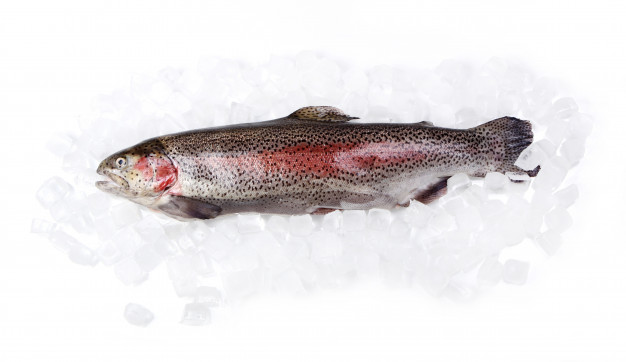
Rainbow Trout
Rainbow trout is highly recommended by nutritionists because of its low fat, high nutrient content. Containing 22 grams of protein and little fat or sodium in each serving, this fish comes packed with potassium, selenium, vitamin B6, and vitamin B12.
The preferred source of rainbow trout is farmed, as lakewater fish are often contaminated with high levels of mercury or heavy metals.This fish is another fantastic source of omega-3 fatty acids, which have been strongly associated with good cardiovascular health.
Omega-3s have been credited with reducing deaths associated with cardiovascular disease, and weekly consumption of at least two servings of fish high in omega-3s is recommended.
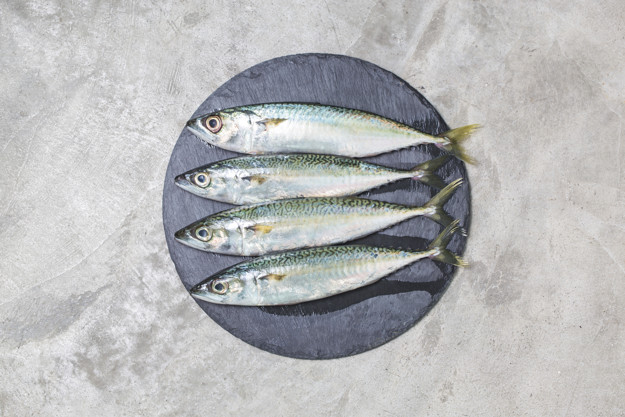
Pacific Mackerel
Mackerel is a rich-tasting fish that can go in a variety of dishes. High in omega-3 fatty acids, it contains a whopping 18.6 grams of protein per serving and is an excellent addition to any meal.
Atlantic mackerel can also proliferate, repopulating lost stocks at high speed, so you don’t have to worry that you’re damaging the environment when you eat this tasty fish.This is where geography comes in . . .
Mackerel is great, but you want Pacific mackerel, not Atlantic mackerel. The difference is mainly in environmental impact, and in many locations (including all of Canada and most of the United States), you cannot even purchase Atlantic mackerel.
The first reason is that they’ve been overfished to near extinction, historically, and their numbers have not yet recovered. Pacific mackerel are still at high enough populations that they’re considered stable and continue to be sustainably fished and farmed.
The other problem with mackerel is that bycatch (this means catching animals like seabirds, turtles, dolphins, and different marine life by mistake) has been high in Atlantic Canada. For environmental reasons, enjoy mackerel, but ensure you purchase pacific fish.
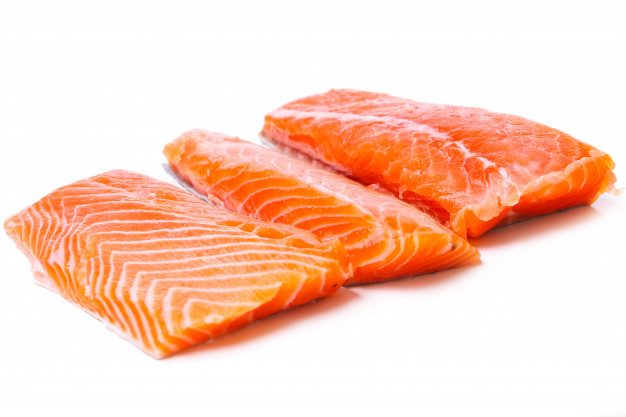
Wild-caught Alaskan Salmon
I know what you’re thinking—salmon should’ve been the first fish on this healthiest seafood list. But salmon comes with a side-story that is rarely discussed, and that is its contaminant and mercury content.
Farmed salmon tend to be high in contaminants because they are often housed in close-quartered environments, and accumulation of pollution, waste, bacteria, and dead food can add up to a high level of contamination.
This is bad for the salmon, bad for our health, and bad for the environment. In waters already polluted with industrial waste, salmon pose an even more significant threat to our health.
So back to our Alaskan salmon. Alaskan salmon is being monitored by biologists, ensuring water quality is high. This results in healthy, uncontaminated fish, and higher omega-3 counts.
Alaskan salmon oil has also been tested and found to be high in these helpful fatty acids, even when canned. Salmon is a healthy, nutrient-packed food shown to be a nutritional dietary addition, as long as you are aware of where it comes from! Canned or fresh, Alaskan, wild-caught salmon is your most beneficial choice.
Seafood options you should avoid
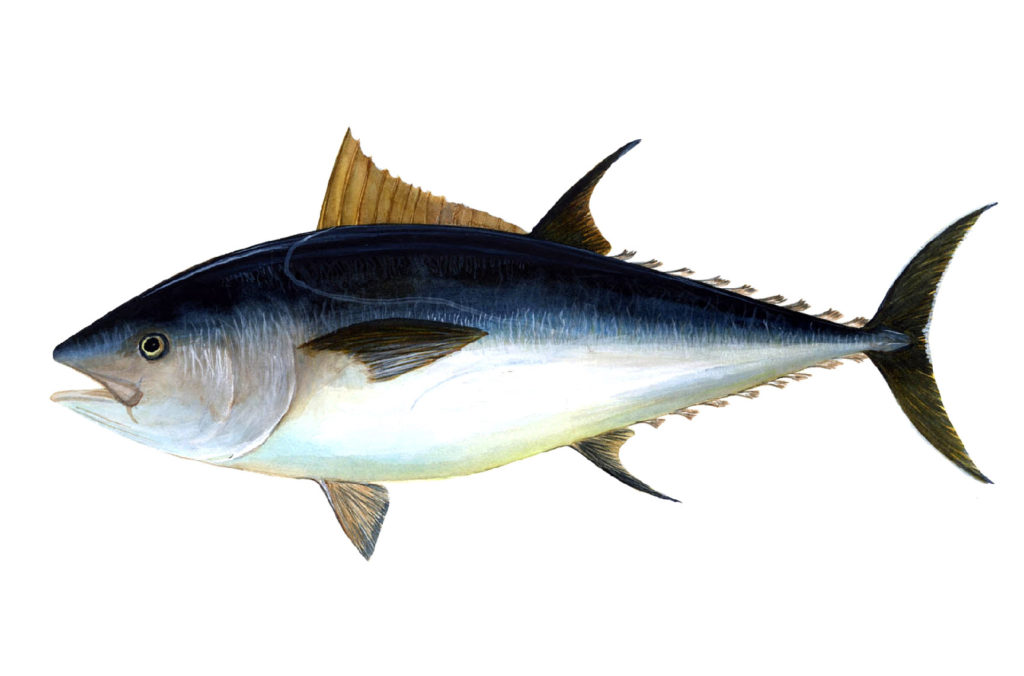
Bluefin Tuna
Once (and still to this day, in some regions) considered a delicacy, this fish has a few problems. The first issue is that Bluefin Tuna are endangered …To be precise, they’re critically endangered.
Fishing is prohibited, but the population continues to decrease as demand and market prices rise, and poaching continues to plague the Bluefin.The second issue is contaminants. One contaminant is mercury, which is relatively high in Bluefin Tuna, and the second is a plastic byproduct called polychlorinated biphenyl, or PCB.
PCBs, come from your old electrical equipment and appliances that are not disposed of properly, which then leech these cancer-causing chemicals into oceans. The chemicals are then eaten by fish, and subsequently by us.
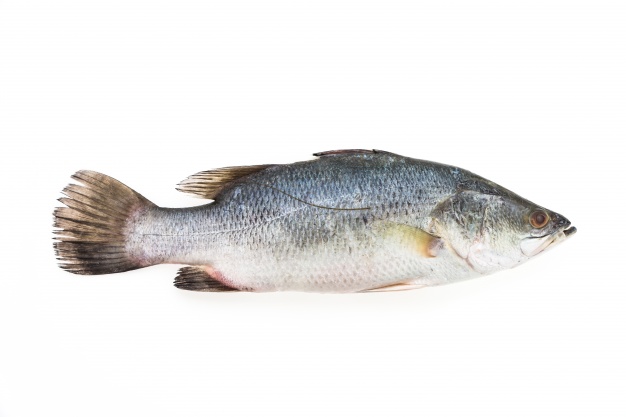
Chilean Sea Bass (also called Patagonian Toothfish)
The Chilean sea bass is a long-lived fish that doesn’t reproduce very quickly, which means it’s susceptible to overfishing. This is precisely what has happened in recent years, as illegal fishing for this premium-priced prehistoric fish increased along with the price on the black market.
The Chilean sea bass is working its way out of the endangered category, but it is still recommended to eat them rarely if at all, allowing the population to recover. Another historical problem associated with Chilean sea bass fishing has been accidental bycatch of sperm whales, sea birds, and other marine life.
This problem is slowly being mended, but techniques are still under improvement. While this is a healthy fish, for environmental reasons, there are better alternatives with the same health benefits.

Grouper
Another slowly reproducing and long-lived fish, groupers are high in mercury, which poses a threat to human health. In particular, groupers from the Gulf of Mexico have posed sub-lethal but present levels of mercury, which leads nutritionists to advise other types of fish for the omega-3 and other fish-based nutrient portion of your diet.

Farmed Salmon
We already covered why farmed salmon is not a good option, and why you should be looking at wild, Alaskan-caught salmon instead. Farmed salmon is housed in an extremely small area, to reduce operating costs, which means a buildup of contaminants, waste, and old food is a chronic problem.
Farmed salmon can often have problems with parasites and viruses, which can be transferred to you if the salmon is not cooked correctly. Finally, PCBs are a rampant problem in farmed salmon, and a solution has not yet been found to fix this problem.
Orange Roughy
The orange roughy has one of the slowest growth rates of any fish, with an extremely high maturation age (23-40 years of age!) and a lifespan of up to 100 years. Given these factors, it doesn’t reproduce very quickly, and overfishing for this delicacy has been a problem. In many places, orange roughy is not targeted for fishing due to sustainability issues; however, they are often a bycatch of a fishing method called “deepwater trawling,” which consists of sweeping the ocean floor with an oversized net.
As a result, orange roughy populations may still not be recovering to sustainable levels. The other negative factor about the orange roughy is, as with most fish on this “avoid” list, it is high in mercury and other toxic substances.
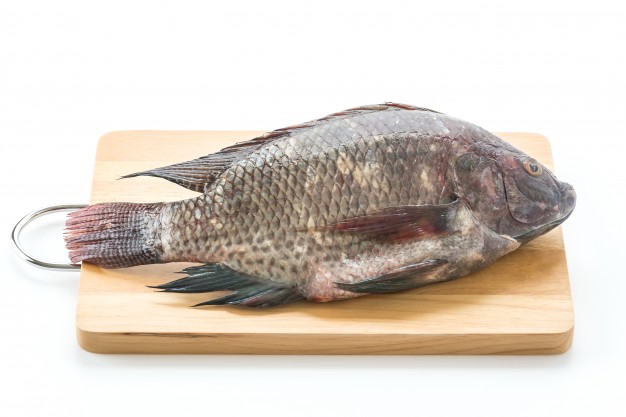
Tilapia
When tilapia first became available, it was touted as a superfood, rich in omega-3s and other nutrients. However, it soon came to light that this fish is actually relatively low in nutrients and omega-3 fatty acids.
It’s also high in inflammatory fats, but studies on this are ongoing. Unfortunately, this fish can also contain high levels of heavy metals and cyanotoxins, mainly when farmed.

Caviar
The final seafood on our “avoid” list is caviar, which is usually harvested from Beluga sturgeon, a fish that has walked the line between endangered and “not quite endangered” for many years.
This is the first reason to avoid caviar. The second reason is that the increased demand for caviar, even as desires and recommendations to limit or end commercial fishing for this delicacy increased, led to a serious poaching problem—particularly in the United States.
In one specific case, more than 2,000 adult sturgeon was estimated to have been killed by poachers, who harvested 1,500 kg of caviar from them. This damage to the population and environment is the second reason to avoid caviar.
While it is high in omega-3s, iron, magnesium, and several vitamins, the unethical harvesting as a result of the endangered status of the Beluga sturgeon lands this seafood on the “avoid” list, as there are many other sustainable sources of these nutrients
In conclusion
For a combination of health and sustainability reasons, there are certain types of seafood that are better than others.
Befriend your local fishmonger, learn what is fished sustainably close to where you live, and get your omega-3s and micronutrients while protecting our species and environment at the same time!
If you want to learn about other foods that impact the environment, our article “The World’s Healthiest Nuts!” has great information on the most sustainable and not-so-sustainable nuts.
Get our best articles about nutrition, health and fitness.
About Satia
Our Mission is simple. Top quality functional foods from sources that you can trust.
Learn more